Baltra - Charles Darwin (PM) Arrive to Galapagos and transfer to the yacht. We will start our cruise with a visit to the Charles Darwin Research Station. The Charles Darwin Research Station is based at Santa Cruz. Visitors are encouraged to donate to this organization, which carries out investigations and advises the Ecuadorian government and travel agencies on minimizing the impact of tourism on the islands. It contains a national-park information center and a museum. The station is also a tortoise breeding and rearing center, where tortoises of different subspecies are prepared to be reintroduced back to their natural habitat.
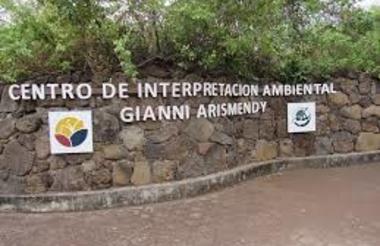

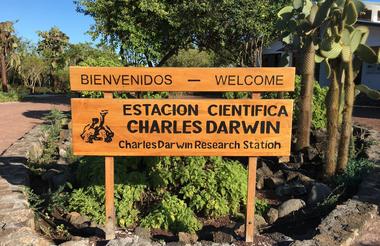
Chinese Hat (AM) small islet located nears the south-east of Santiago. It's shaped like a Chinese hat when seen from afar. It is an island consisting of a cone type "Splash" (lava ejected as droplets and falling close to where it came out, which forms a cone angle) that forms the top, and lava tubes that run down to the coast. In the west you can see lava formations, which are an indicator that the flows were formed under the sea and have been raised towards the exterior, reason why coral heads on lava can be seen. This visit provides an excellent opportunity for the interpretation of geologic features such as lava tubes and lava flows.
Rabida (PM) Also known by the name of Jervis in honor of a British Admiral John Jervis, Earl of St. Vincent. Rabida is located 5 km south of Santiago Island and is commonly regarded as the geographical center of the Galapagos Islands. It has an area of 4.9 km ² and a maximum altitude of 367 meters. It has a high iron content, which causes that this place has a distinctive reddish color. Its main attraction is the salt lagoon with flamingoes, pelicans and boobies place where they build their nests.



Espumilla Beach (AM) is located in northern coast of Santiago Island in James Bay. During the last presence the El Niño phenomenon, one of the two lagoons in this site, underwent a process of sedimentation, thus causing the disappearance of a colony of flamingos. The main attractions are the Palo Santo forest and the marvelous. The beach is also an important site for nesting marine turtles.
The Black Beach (PM) The Black Beach is located at the west side of the Island and is the main attraction. The volcanic tuff deposits have created the formation of this special black sand beach. This site is called Puerto Egas, because there was an attempted, to start the exploitation of salt, which failed because the price of salt in the continent was very cheap and did not justify its exploitation in Galapagos. The project was abandoned and they left their infrastructure
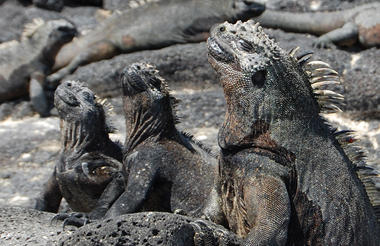

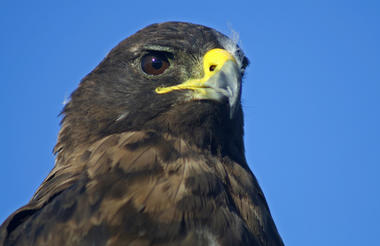
Fernandina (AM) is the third largest island in the archipelago and has a single visitor site: Punta Espinoza located at the northeastern tip of the island. Just across Tagus Cove, is a visitor’s site where some of the unique species of Galapagos can be seen. Marine iguanas conglomerate in larger groups than in any other island. They bask around in the sand, swim near the shore and sometimes block the way at the landing dock. Among the unique species found here, is the Flightless Cormorant. A bird that do to the lack of predators had to adjust their way of survival and perfect their skills of finding food in the ocean. Their wings, tails and feet progressively adapted for swimming. To see these birds, is to witness evolution happening right in front of you can get within 2m of the cormorants and penguins.
Tagus Cove (PM) a tour along the cliffs in a zodiac will give the visitors a good chance to see the Galapagos penguin, the flightless cormorant and other sea birds. From the landing dock it is about a 30 minute hike along the trail up to the top of the cliff from where you can view Darwin Lake, an uplifted ultra-saline lake saltier than the sea. You can also see several volcanoes from this location. Look carefully at the graffiti on the surrounding cliffs of the cove, it has been written by pirates, whalers and buccaneers in past centuries.



Elizabeth Bay (AM) Is located on the west shore of Isabela, at the Perry Isthmus, Elizabeth Bay is a marine visitor site (no landings are permitted). As you visit Elizabeth bay small boat Galapagos Hawks soar overhear and schools of Pompanos and Dorados can be seen swimming underneath you. Activities: PR
Punta Moreno (PM) Punta Moreno is located on the north coast of Isabela Island. The route of the trail is approximately 2100 meters. The main attraction in Punta Moreno is the coastal lagoons in the middle of black lava flow where there are several species of birds. It has a view of 3 volcanoes, the most actives in the Galapagos; Sierra Negra and Cerro Azul.



Tintoreras (AM) This day will lead you to the largest island of the archipelago, Isabela Island. With a surface of 4588 sq.km the island encompasses more than half the land area of the entire Galápagos. Here you will have a short boat trip through the harbor bay of Isabela. Pass sea lions and pelicans; take a relaxing sunbath on the fishing boat. Eventually, we will reach the small island of “Tintoreras”. Here you will take an easy walk through the bizarre landscape of lava with its huge colonies of sea lizards. Also a colony of sea lions is local here and often you can observe white tip sharks, resting in the flat water near the shore. You will walk with your guide to the historic Wall of Tears.
Sierra Negra (PM) We head up to the highlands from Puerto Villamil to Sierra Negra slope, and later we will do some hiking on uneven terrain until we arrive to the Sierra Negra volcano rim. Sierra Negra is the second widest crater in the world. From this viewpoint, you have fantastic sights to the 6 x 5 -mile-wide crater, the rest of the volcanoes and Perry Isthmus, a 12 Km wide lava field. From here we can hike to Chico Volcano to watch the striking lava formations, examples of the geological occurrences that have created the Galapagos Islands. We also visit the tortoise birth center of Isabella.



El Chat (AM) Our first stop is at Los Gemelos (the twins), which are a pair of craters approximately 30m deep, it is a Volcanic action underneath the ground made the magna chambers empty causing the above ground to cave in, creating several craters, of which Los Gemelos are the largest. However, our main time in the Santa Cruz highlands will be spent at the Tortoise Reserve EL CHATO, where a number of the endemic Santa Cruz subspecies of Giant Tortoise, “Geochelone elephantopus porteri”, wander freely. The highlands are also home to Scalesia, Miconia, and Pampa vegetation zones. Birds in this area include several species of finch, the vermillion flycatcher, Galápagos rail, Galapagos Dove, and paint-billed cake. We also may have the opportunity to visit the spectacular lava tubes on the island.
Tortuga Bay (PM) The interesting walk to the Turtle Bay beach, perhaps the most beautiful beaches in the Galapagos, that includes swimming and snorkeling, observing colonies of marine iguanas, pelicans, Darwin's finches, sharks, sharks, sea turtles, the incredible forest Giant Cactus, and the nesting of marine iguanas.



Breakfast
Lunch
Dinner
Interpretation Center (AM) This site has educational information about the evolution of the Galapagos Islands and animal life in the islands. Then transfer to the airport of San Cristobal.
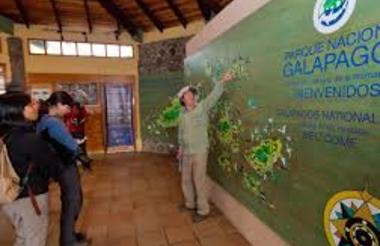

Breakfast








